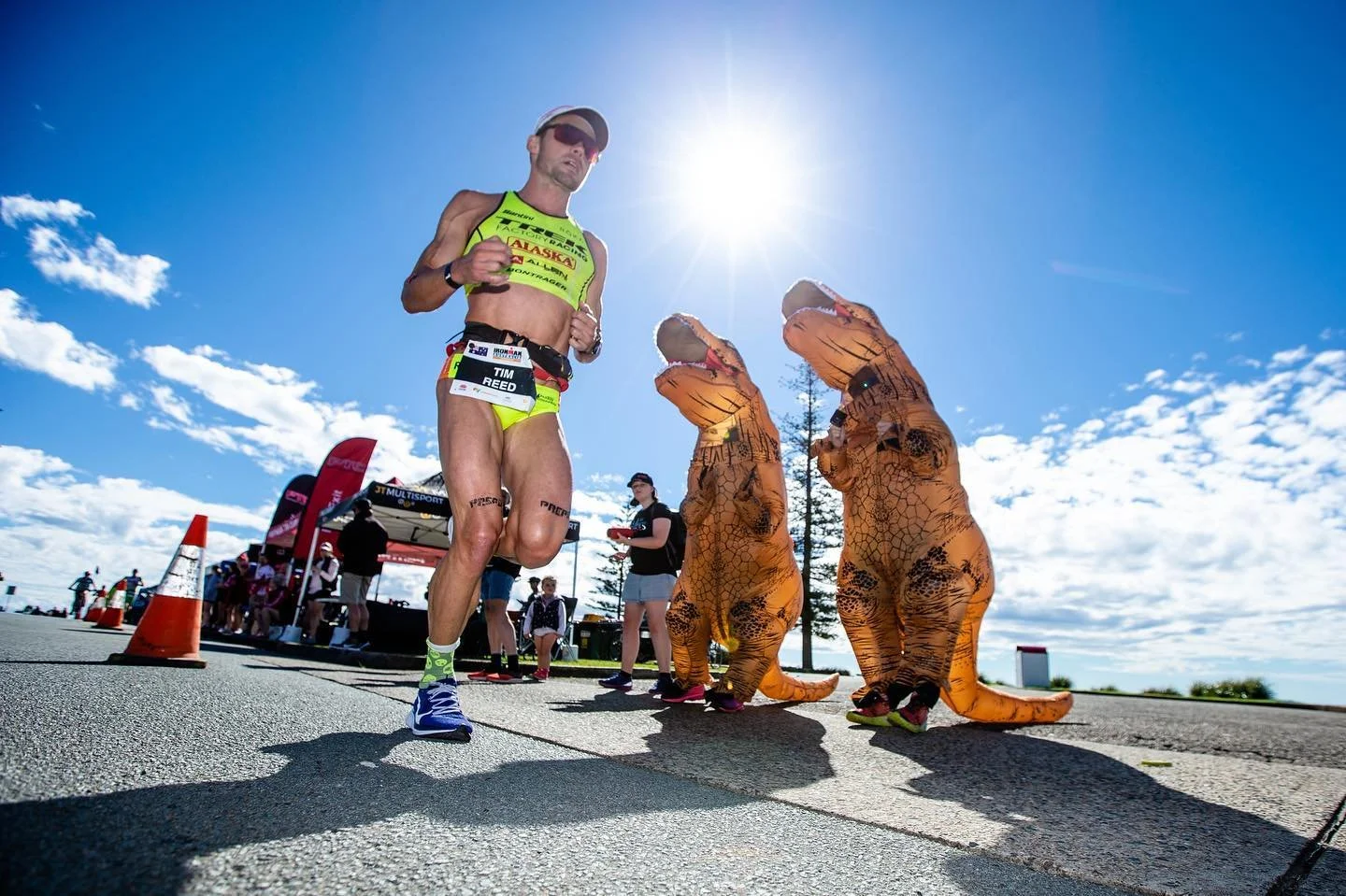The Impact of Cycling Cadence on Running Performance
Written by Coach Reedy.
When I transitioned from age group racing to racing as a professional, my running was already ‘sorta’ competitive with the pros, thanks to doing larger run miles with limited training time around full time work, however my swim and bike were definitely not up to standard. I was always quite cut throat with what I considered ok to be an adequate level of performance to continue being a pro triathlete. Perhaps overly so when looking back. i.e., I had 4 pro podiums in my last year as a full time pro and considered that a failure, having never really gone through a form slump or not seeing improvements in at least one of the sports over the years racing.
So I gave myself 3 years to start making an ok living from the sport and with a swim and bike that wasn’t really in the ballpark at least in world class races, I really had to get it happening. The downside of some Aussie athletes not racing abroad more is they don’t really get an insight into where they’re cycling is at. At the time, while I think Aussie swim and run level was probably better than most U.S and Euro pros, their cycling was simply at another level. I went from getting off with the front pack in Aussie races to heading to the U.S and Europe and losing 8-10 minutes on the bike! A good portion of that was that I had zero understanding of how important equipment choices are on the bike and a good portion was I just wasn’t a strong enough cyclist. I’ve talked about the swim changes I implemented a lot before but not so much about the cycling strategy used over 3 years to really get me moving well on two wheels. Especially once I started working with Matt Dixon from Purple Patch, I introduced a lot of low-cadence cycling intervals and let my running take a back seat. A good coach isn’t thinking about the next race, they’re thinking about your potential and with Matt giving me the confidence to do so, we used a lot of strength endurance work on the bike to great effect. To the point I went from hanging in there on the bike at best to rarely not having a top 3 bike split for a few years and interestingly this mainly came about with a cadence in the 75-85rpm range.
The downside? My run times were definitely off. Often holding me back from getting the win.
So like every good coach should do, we then pivoted to bring back the run and maintain the bike. I had to train to be able to ride at above 90rpm to really see my run back at a top level and gradually it got there and for a few years both bike and run were working for me really well.
Image @koruptvision
Interestingly, my power or bike was never quite as good at a high cadence as when I rode lower cadence BUT my overall bike/run times were better at a higher cadence. Everyone’s optimal cadence is very individual. Trial and error in races and lots of training over the full spectrum of cadence options is essential is a part of what is essential to maximise your cycling.
The Physiology of Cadence & Running Performance
Low Cadence Riding:
Requires greater recruitment of Type II (fast-twitch) muscle fibres.
Burns through glycogen at a much higher rate.
Increases muscular fatigue with each pedal stroke.
Can reduce the ‘pop’ in your run stride and impair glycogen uptake later in the race.
High Cadence Riding:
Uses more Type I and Type IIa muscle fibres (more endurance-oriented).
Reduces muscular strain but increases cardiovascular demand.
Requires a well-developed aerobic energy system to be efficient.
Some athletes will never be as efficient at high cadence and should race at their optimal balance.
Why Women Often Perform Better at Lower Cadences
This is just a personal hypothesis, but here are two reasons:
Many women have historically ridden cranks that are too long for their leg length, forcing them into lower cadence cycling.
Women, on average, are better at utilising fat stores for fuel, meaning they can sustain glycogen-burning efforts on the bike and still run well.
Image @koruptvision
What the Research Says
Study 1: A study on 13 male triathletes found that after cycling at a high cadence, their 3200m run was nearly a minute faster than after low cadence cycling. Interestingly, stride length didn’t change, but run cadence was significantly higher. (Source)
Study 2: Another study found no significant difference in running performance after cycling at 80-100rpm. However, at 60rpm, running cadence dropped significantly. The catch? The test only involved 20 minutes of cycling—possibly not enough to induce fatigue and glycogen depletion at 80rpm. (Source)
Every athlete is different. The key is to develop both high and low cadence abilities in training and race at the cadence that allows for the best bike-run combination.
Go forth. And beware of the dragon.



